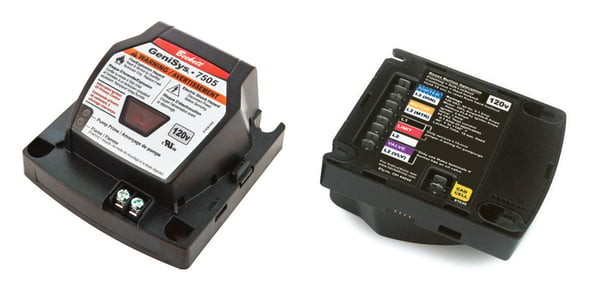When heating with gas or oil, safety is always the top priority, and over the years, OEMs have counted on the innovations of their suppliers to improve the safety conditions inside their systems. In general, heating safety hinges on every part of the heating systems interacting correctly with the other components they are connected to. But when there are so many vital parts in the system that need to constantly be interacting, the best way to ensure that heating is carried out safely is to introduce a part that oversees the entire combustion cycle — the primary control.
In this post, we'll give you an introduction to heating primary controls, their purpose in the heating system, and how oil and gas controls differ.
The Purpose of Primary Controls in Heating Systems
Primary controls serve an overarching purpose within the heating system: they control the input provided by various parts of the system. In particular, a primary control has three specific functions:
- Responding to the thermostat.
- Responding to the limit control.
- Controlling the startup, run cycle, and shutdown of the burner.
In order to carry out these functions, the primary control must monitor both the presence and absence of a flame inside the burner and then react to the flame condition. If the thermostat indicates that the temperature in the heating area is low, the control will startup the burner for a run cycle. If the limit control detects potential overheating, it breaks the power supply to the control, shutting the burner down until the combustion cycle is ready for heat again.
A control will not activate the burner if a flame is detected during the off cycle, preventing excess fuel from being pumped into the unit and releasing dangerous fumes. Additionally, if no flame is sensed, a primary control will quickly shut its burner off if no flame is sensed during startup or if the flame goes out during a run cycle. This prevents fuel from being pumped into the unit when there is no flame, which would result in hazardous conditions.
When a control functions properly, it is constantly and automatically monitoring the operation of the burner and the presence of the flame. With a primary control, it's not necessary to physically monitor the flame to check for failure, reducing the risk of error and late detection. Most modern controls can sense and react to flame failure in one second to minimize the impact of the failure.
 |
| Click here to learn more about the GeniSys™ Advanced Burner Control and other primary controls from Beckett. |
The Key Difference Between Gas and Oil Primary Controls
Primary controls are present in both gas and oil heating systems, but these controls are designed in slightly different ways that affect the function of the safety features.
A modern oil control senses the presence of a flame using a cadmium sulfide (cad) cell device, an improvement over thermo-mechanical primary controls of the past, (stack switches).The cad cell connects to the primary control and is mounted in the air tube of the burner. The detector senses light from a flame base and uses this input to inform the control when the flame is on. If flame is not sensed properly during startup, the oil control will turn off the motor that powers the burner. The same type of cad technology is used to make automatic outdoor lights that automatically turn on when the sun goes down. Cad cells are specifically designed to respond incredibly quickly to the absence of a flame.
A gas heating system, on the other hand, will typically use primary controls that employ thermo-sensing or flame rectification for proof of flame as opposed to a cad cell. Many larger gas burner control sense flame using infrared or ultraviolet light sensors the flame. Flame rectification works by using current that flows through the flame, creating a "switch" that mechanically opens and closes electrical contacts that allow electric current to flow to the burner gas valve. If the flame goes out during a call for heat, the switch opens the circuit, which shuts the burner off. This process is known as flame rod rectification.
While the sensing technologies of these two types of primary controls differ, their main purpose remains the same: to ensure the safe operation of the burner depending on the status of the flame. The primary control is one of the most important pieces in the heating system for this reason, in addition to adding convenience to the heating process by eliminating the need to physically monitor the flame.


